|
98. Nymphalis polychloros (Linnaeus 1758) / Large tortoiseshell / Nymphalidae – Nymphalinae
NL: grote vos / D: Groβer Fuchs / F: grande tortue, le grand-renard
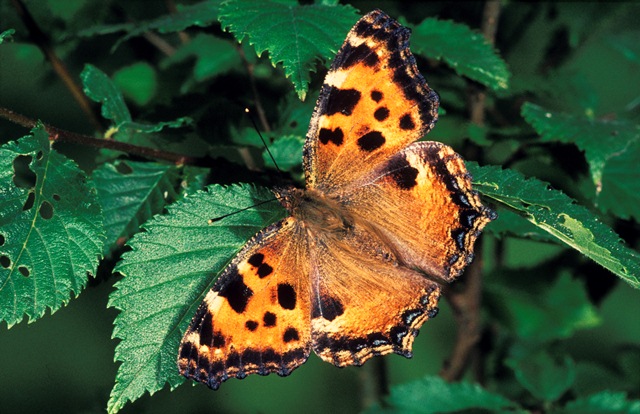 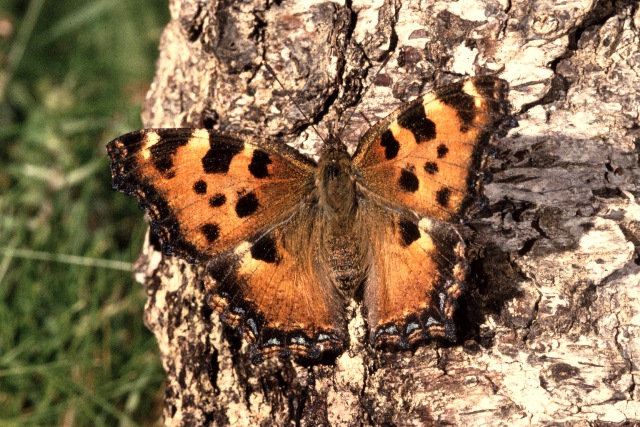 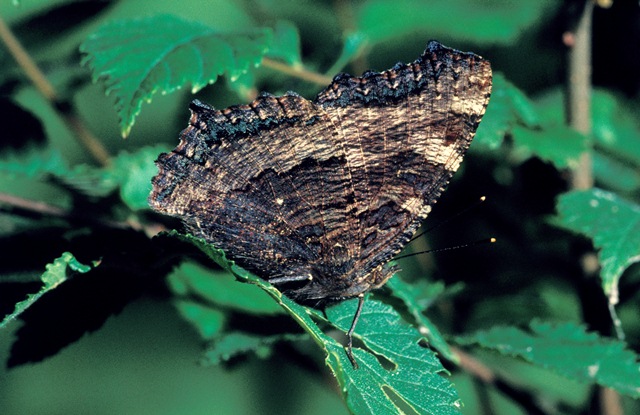
Photographs: Frits Bink ©.
Large, wing length 30 (27-32) mm. In the Benelux the species occurs mainly on warm and dry places in Luxemburg and Wallonia. In the early period of last century it occurred also widely in the Netherlands and Flanders but today it is observed only irregularly.
Butterfly is on the wing in spring from mid-March until early-May and the offspring in the summer from mid-June until early-September and peaks mid-July. The species is known from maritime to continental climates, amplitude 6 to 16. Required heat sum 700°d and maximum tolerated 2600°d, corresponding climate windows 24 and 44 weeks.
In appearance the species resembles a large Aglais urticae; however, in ecology and biology it is similar to Nymphalis antiopa, however it differs in climate preference, being inhabitant of warmer regions.
The adults of this species often have long aestivation periods in summer and thus are rarely seen.
Ecological characteristics
Behaviour over time
Overwintering: adult, hidden in hollow tree trunk, cave or shed.
Reproduction: after overwintering the reproduction activity begins and three or four weeks later the oviposition starts when the body contains 180 (170-200) eggs.
Estimated potential production about 1.7 times as much.
Larval feeding periods: 6 weeks in the period from end-May until mid-July.
Generations: one.
Spreading of risk: not observed.
Life cycle: egg 19 (17-22) days, larva 44 (30-50) days, pupa 16 (14-20) days.
Life span of adult: very long, 43-46 weeks.
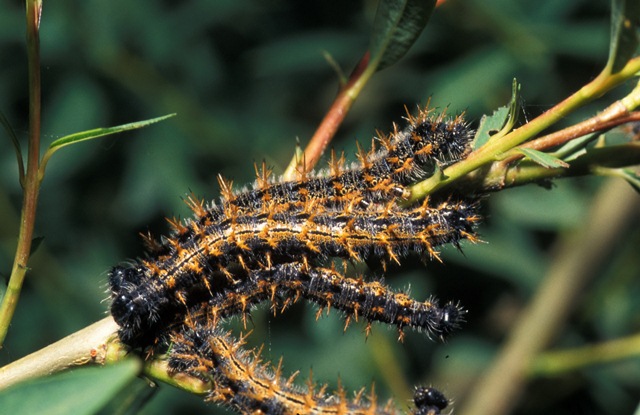 
Photographs: Frits Bink ©.
Behaviour in space
From stay-at-home to migrant: nomad, spatial requirement considerable.
Finding a mate: male patrols or meets females when foraging.
Orientation in the landscape: edge of wood, river valley or lines of trees.
Oviposition: one large clutch containing 170-200 eggs, followed by some smaller ones, laid in neat bands, encircling young twigs of a shrub or tree.
Defence
Threats from other organisms: larva is armoured by sharp spines but sensitive to parasites and virus diseases.
Threats from the environment: unfavourable weather in spring and summer.
Feeding habits
Adult: in summer mainly fluid from wounds of trees, rotten animals and faeces; in spring also nectar from catkins of flowering willows.
Larva: lives gregariously in a silky web and returns to this web after feeding on nearby leaves.
Larval foodplants
Plant species: Rosaceae, Prunus avium, Salicaceae, Populus tremula, Salix alba, S. cinerea, Ulmaceae, Ulmus glabra, U. laevis, U. minor.
Journal
Rearing experiment based on larvae from Öland, Sweden:
8 July 1982: eight fully grown larvae collected from Ulmus.
24 July: pupae hatched.
Table 98-1. Results of dissections

Table 98-2. Collection and observation localities
D, Lorch, 300m, 50° 02’ 05”N – 7° 47’ 56”E; 31 July 1985.
F, Pagny-la-Blanche-Côte, 322 m, 48° 32’ 01”N – 5° 44’ 14”E; 7 July 2006.
L, Kautenbach, 240 m, 49° 56’ 25”N – 6° 01’ 34”E; 25 June 1996 (larvae on Salix), 20 June 2006 (empty nests).
L, Tintesmühle, 50° 04’ 56”N – 6° 07’ 18”E; 28 June 1996 (empty nests on Salix).
S, Öland, Himmelberga, 56° 44’ 20”N – 16° 43’ 00”E; 8 July 1982 (larvae on Ulmus).
S, Öland, Tävelsrum, 56° 37’ 55”N – 16° 32’ 23”E; 9 July 1982 (larvae on Ulmus).
Fig. 98-1. Nymphalis polychloros, phenogram adapted from Bos et al. 2006: 270.
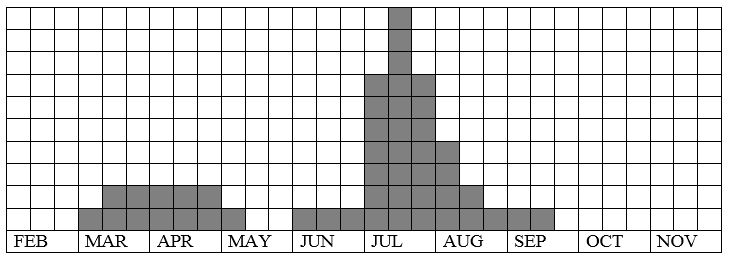
Fig. 98-2. Nymphalis polychloros, habitat characteristics.
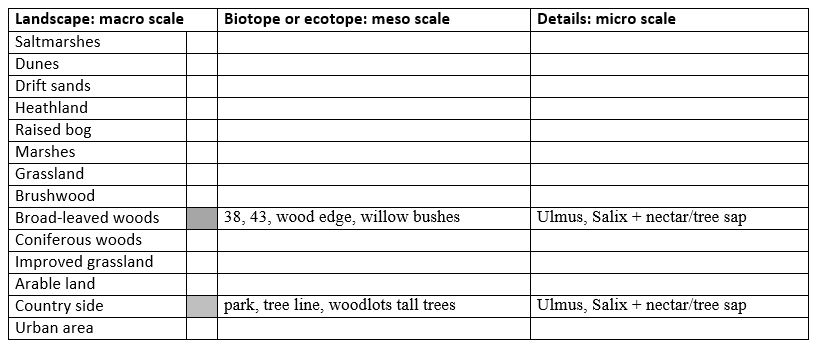
Fig. 98-3. Nymphalis polychloros, climate matrix, heat-sums 700 - 2600°d.
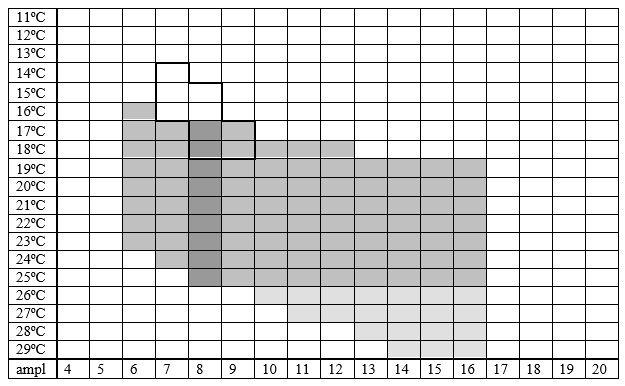
|










